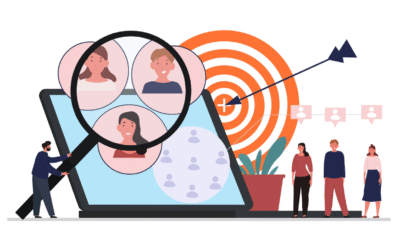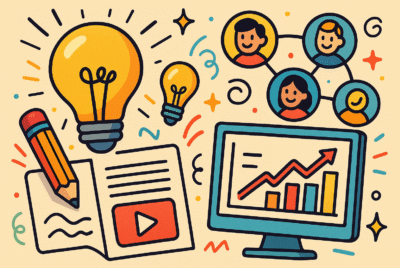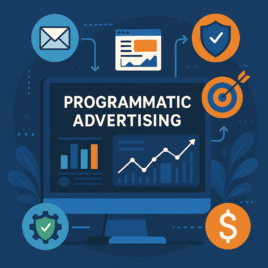Types of Digital Marketings
Social Media Marketings
Social media marketings involves the use of social media channels (like Instagram, Twitter, and YouTube) to build a brand, connect with customers, drive website traffic, and increase sales. These platforms have proven to be excellent tools because they can educate customers on products, individualize consumer social media experiences, and engage with an audience in a way that wasn’t possible before. Marketers rely on data analytics tools to develop targeted ads and timely posts that increase social media engagement with brands and boost revenue.
Content Marketings
Content marketing focuses on creating relevant, interesting, and valuable content that attracts an audience and converts them into customers. Marketers are turning to this form of content because it boosts SEO traffic and increases both the quantity and quality of customers. A clever content marketing example is Coca-Cola’s “Share a Coke” campaign. The company labeled its iconic bottles and cans with popular names to build stronger bonds with customers. The experiment was such a resounding success in Australia that it ended up being implemented in 80 countries worldwide.
Influencer Marketing
Influencer marketing is a type of social media that relies on the virality and popularity of social media influencers, who are paid to promote and endorse products. Essentially, companies pay social media accounts with a large following to include their product in an Instagram, Snapchat, or even Facebook post. This type has proven profitable for both the company and the influencer. The company potentially gets millions of views of their product and the influencer gets paid. For example, to reach Dwayne “The Rock” Johnson’s 340 million Instagram followers, companies need to pay about $1 million per post.
SEO Marketing
Have you ever wondered how a search engine picks its search results for your specific query? How does it know what to choose at the top option? Much of that has to do with search engine optimization (SEO). SEO is the practice of increasing unpaid (known as organic) traffic through a variety of technical and content-related practices that make it easier for a search engine to read, understand and rank a site. Optimizing a site’s content, photos or backend procedures provides an uncluttered and efficient experience for both a user and a search engine, resulting in higher rankings. The higher rankings provided by this free method of boosts traffic and converts a casual audience into loyal customers.
Types of Traditional Marketings

Print Marketing
Print marketing involves marketers reaching out to target audiences through offline formats. Brochures, informative flyers and mail advertisements are a few examples of print marketing that marketers hand out or deliver to the homes of consumers. Businesses may also try to reach wider audiences by placing ads in magazines, newspapers and other publications. While marketing teams focus on producing concise written content, they must also determine how to pair text with visuals. The most effective print materials complement engaging writing with relevant images, branded color schemes and other eye-catching elements.
Billboard Marketing
Billboard marketing is another way to expose more consumers to a brand and feature content on larger physical surfaces. Consumers can find these kinds of advertisements in crowded areas like Times Square, along popular highways or on the walls of buildings. Some companies may pay for mobile billboards, placing ads on the sides of trucks or public transportation vehicles. All billboards follow the same principles of print marketing, combining written content with coordinated color schemes, images and other visuals. Teams need to get creative with billboards, such as applying bold colors or humorous content, since drivers and passersby may only have a few moments to take in a message.
Event Marketing
Event marketing relies on both company-sponsored and public events where a business can have conversations with customers and spread its brand through physical materials. Examples of company-sponsored events include hosting a conference or learning convention. Organizations may also join public events, such as setting up a booth at a local community arts fest. Companies should supply marketing teams with materials like tents, banners and flyers for interested individuals. If possible, it’s also helpful to have a sample of a product for consumers to view. Each event provides an opportunity for marketers to share information with consumers and answer any questions, spreading their company’s brand and earning new customers.
Product Marketing
Product marketing is vital to the success of a new product launch and is applicable across many industries. Even before the product is built, these marketers are doing intense market research to ensure that the product is the right fit for a company’s customers and that it serves a useful purpose. Then, the product team will use the product marketer’s insights as a guide on what to include in the new product. As the product is being built, the marketer will arm the sales team with the necessary knowledge and materials that will help them sell the product to current customers and reach out to new audiences. After a launch, the product marketer will ensure that customers aren’t having adoption issues and will craft marketings materials to make sure that the product stays relevant as time goes on.





